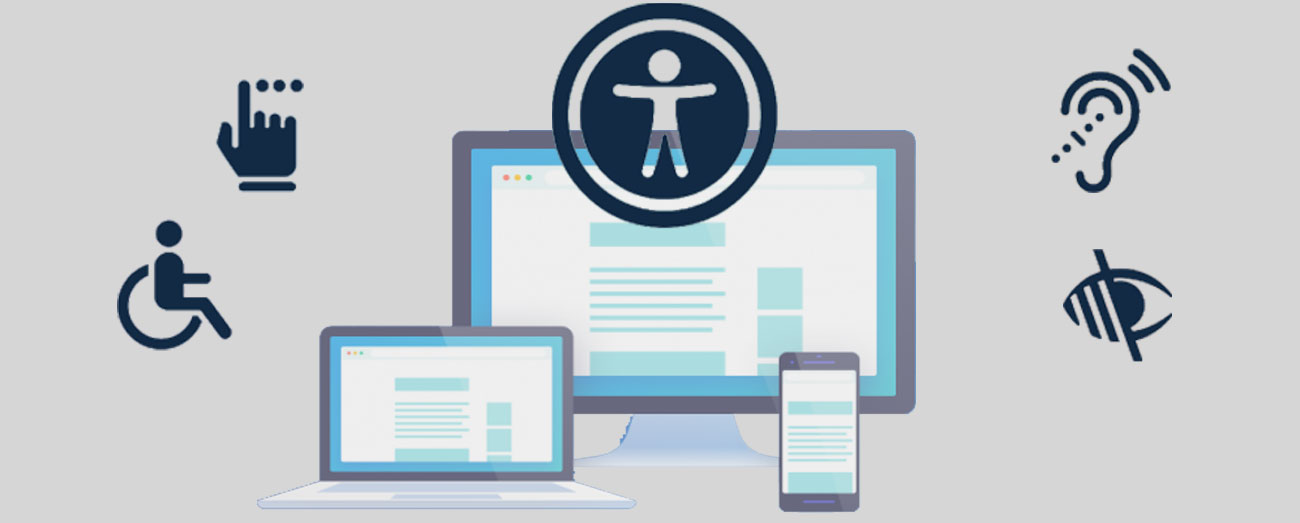Web Accessibility is a Right, Not a Privilege
Tagged with: Design Tips & FAQs, Mobile
“The power of the Web is in its universality. Access by everyone, regardless of disability is an essential aspect.”
Tim Berners-Lee
One of the most outstanding elements of the internet is that it can remove barriers to communication and interaction that many faces while offline. In an ideal world, everyone should be able to easily use every website on the internet. Sadly, that is not the case today. Recently, many businesses have shifted their focus to their digital presence. With this change, customers are also taking notice, for better or worse. For some companies, the increased scrutiny on web practices has resulted in lawsuits regarding ADA compliance. In fact, these lawsuits saw an increase of 200% from 2017 to 2018 for businesses of all sizes. As a result of the pandemic, users in quarantine have less access to physical locations and amenities, but they are also finding it harder to use essential web services.
Ensuring your website is accessible to all users should not be considered a way to avoid a lawsuit but instead an opportunity to connect with your audience. You should treat ADA compliance as essential to your company’s success as you would your sales team. We will explain the core elements of accessibility and what it means for your business.
What is Web Accessibility?
Web accessibility is a set of rules, behaviors, code standards, and design guidelines meant to allow people with disabilities (and without) to effectively use websites. Created by the W3C and called the WCAG 2.1, the phrase includes all disabilities affecting web use, including:
- Blindness
- Motor & Mobility
- Color Blindness
- Epilepsy
- Blurred Vision
- Cognitive Disorders
- Aging
- Cataracts
- And More
Accessible websites also help people without disabilities. This includes using small screens, viewing in a bright or dark setting, wearing a cast, or even something as familiar as misplaced reading glasses.
What accessibility standards apply to my website?
The WCAG 2.1 at the AA level has been adopted as the global standard for web accessibility, acting as the benchmark in various legislation. Section 508, which applies only to the Federal Government, requires access to electronic and information technology that is accessible and does not pose an “undue burden.” Although Section 508 does not apply to private companies, it can guide proper ADA compliance. There are vital resources available regarding best practices for hundreds of features, but some significant components to consider include:
- Text alternatives for non-text content.
- Captions or sign language interpretation for multimedia.
- Keyboard and other input method functionality.
- Content does not trigger seizures or reactions.
- Content can appear in alternative, responsive layouts.
- Users can easily navigate content and have ample time to do so.
- The text should be available in multiple languages, large, and high contrast.
Is there a compliance solution available for my needs?
The current, affordable options available to businesses provide only about 10-15% of the accessibility needed to become compliant. Some more robust solutions can cost thousands and take weeks to implement, ruling out this option for many businesses. Our go-to solution for both price and features is accessiBe after testing it on our own website. Becoming compliant takes a few simple steps:
- Installation – A single line of JavaScript code allows for rapid installation on any site or CMS.
- Interface – Your website will immediately display the accessibility interface, which solves 30% of the requirements.
- AI Process – In under 48 hours, the AI will kick in, and your website will be accessible and compliant, fixing the remaining 70% of the features.
- Maintenance – Every 24 hours, the website is re-scanned, ensuring any changes are made accessible immediately.
Can you test my web accessibility?
Our team is happy to offer a complimentary ADA compliance test for our clients. We can discuss your results and address all your web accessibility questions.



